Matcha, with its unique color and taste, has become a popular ingredient in lattes, smoothies, and even desserts, but exactly what is matcha and where does it come from?
The Art of Shade
The story of matcha begins hundreds of years ago in Japan. Tea farmers noticed that tea plants naturally shaded by trees produced a tea with a mellow sweetness and a richer flavor profile. Unfortunately, these shaded plants grew slower and weren’t as healthy as sun-grown tea plants.
This led to the development of a special cultivation method. Tea plants are grown in full sunlight for most of the year, but then undergo a period of 30-40 days of intense shade right before harvest. This shading technique mimics the natural shade and disrupts the tea plant’s photosynthesis process.
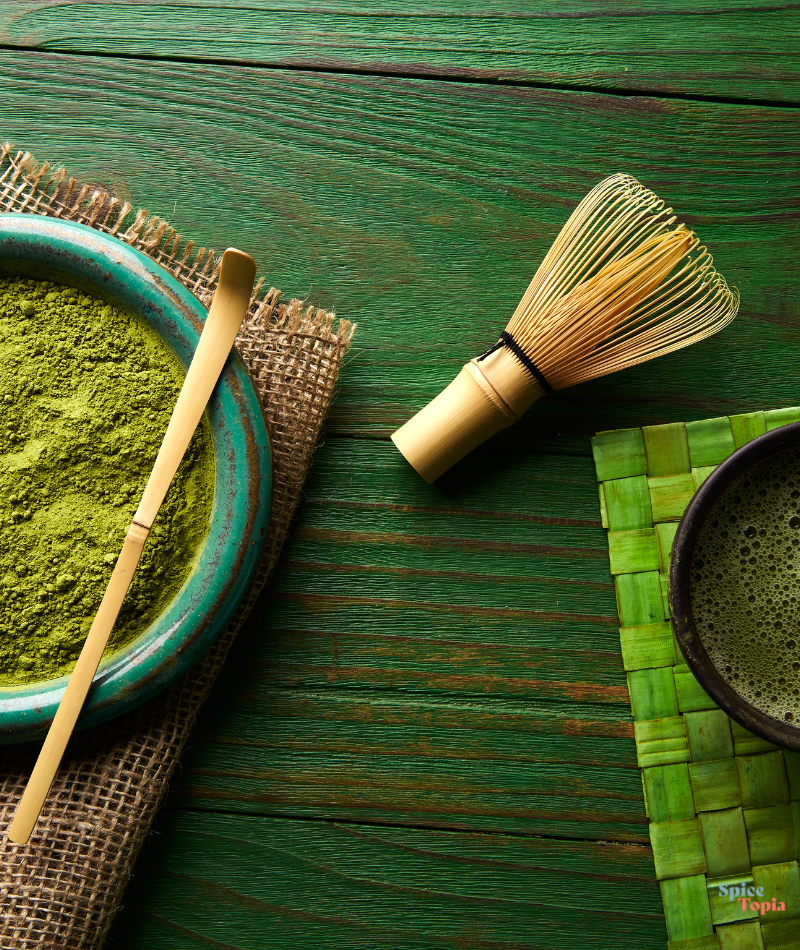
Here’s the science behind shading matcha: When shaded, the tea plant stops producing catechins, the compounds responsible for bitterness in green tea. Instead, the plant focuses on producing an excess of the amino acid L-theanine, which contributes to the unique sweet and umami taste of matcha.
From Tencha to Matcha: A Delicate Process

The shaded tea leaves, called Tencha, are incredibly delicate and must be processed within 24 hours of picking. This meticulous process involves steaming the leaves, removing the stems and veins, and finally drying them before grinding them into the fine powder we recognize as matcha.
Want to try a tencha tea before it’s ground to matcha?
Gyokuro comes from the same plant as matcha and is a shade grown tea that is steamed and then left whole.
Beyond the Ceremony: A World of Matcha
Traditionally, matcha wasn’t meant to be steeped like loose leaf tea. Instead, the green tea powder is whisked into hot water, creating a frothy and vibrant beverage. This act of preparation, presentation, and mindful consumption is the foundation of the Japanese tea ceremony, a beautiful cultural tradition.
However, matcha has transcended these traditional boundaries and found a home in various cultures worldwide. In the United States, matcha is most commonly enjoyed as a latte and is often made from a “matcha mix” which is often a mix of sugar, flavorings, milk powder, colorings, and sometimes a bit of matcha tea. Be sure to look for and use a pure Japanese Matcha Tea Powder.
Ceremonial vs Culinary Matcha
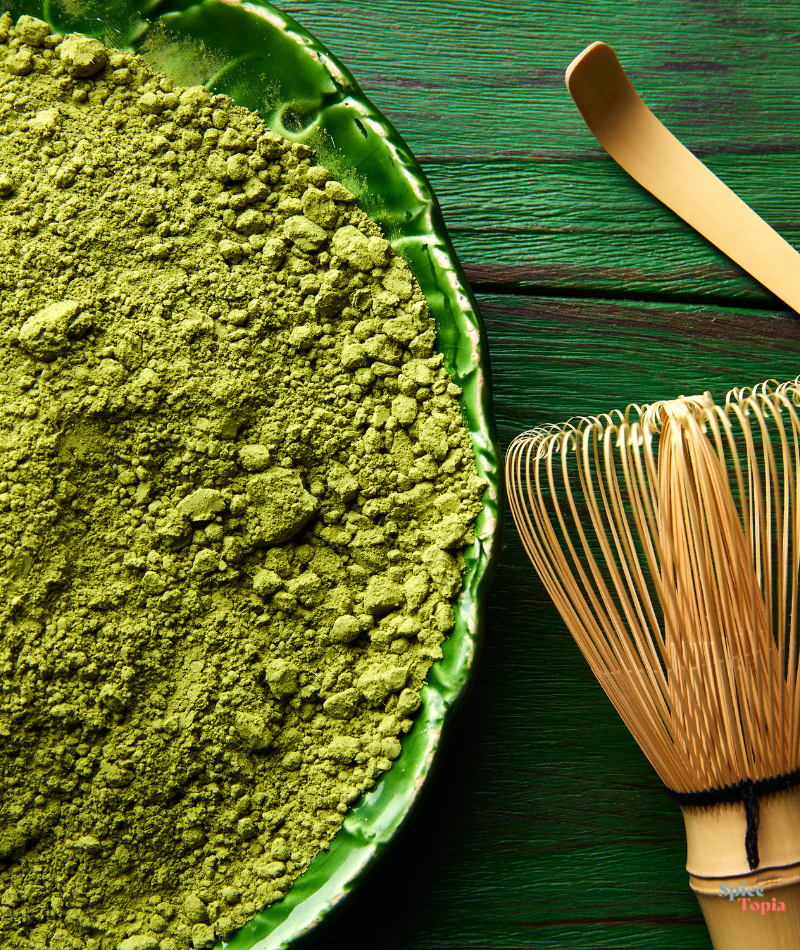
A Matcha Note: Power in Every Sip
It’s important to remember that matcha, due to its fine powder form, packs a more potent punch than a cup of steeped green tea. A cup of matcha tea is made with just ¼ – ½ teaspoon of matcha powder and can contain 2-3 times the amount of caffeine found in most cups of green tea!
How to Make Matcha
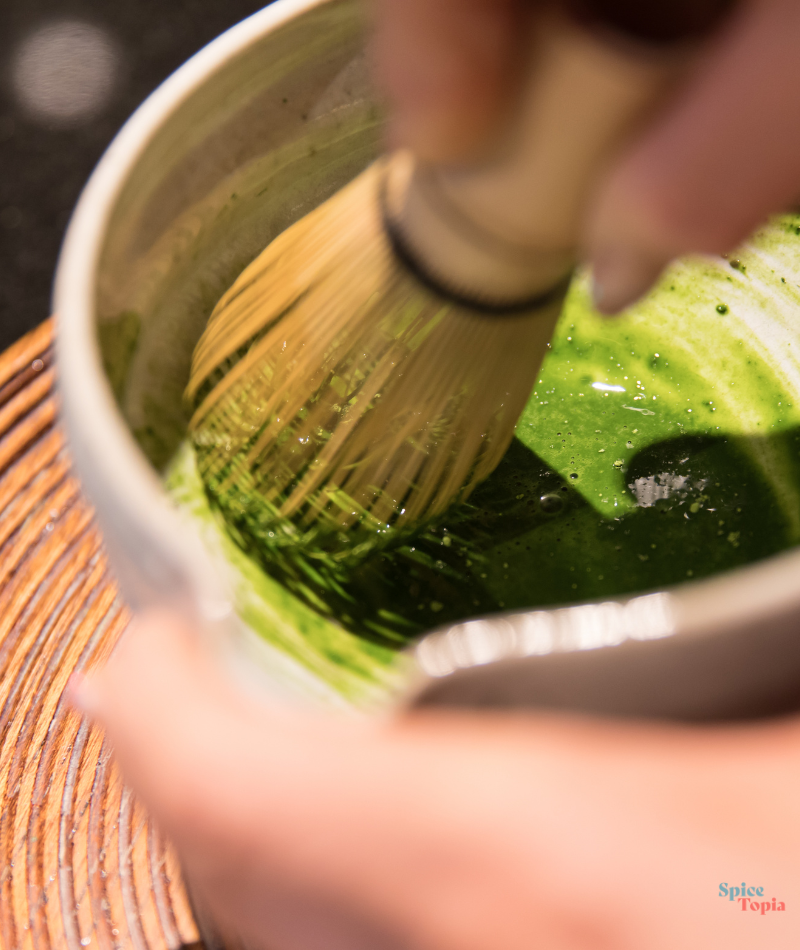
Matcha is simple to make. Start with ¼ of a teaspoon of matcha powder. Place in a cup or bowl. Pour 2 tablespoons of water (180°F) over the matcha powder. Whisk together until a smooth paste is formed. Slowly pour in a ½ cup of water (180°F) whisking constantly.
That’s it! You have pure matcha tea. If you have only experienced a matcha latte at a coffee house such as Starbucks, keep in mind that this matcha will be very different. It will be strong, earthy, and without any of the added sweetness that comes from the large amounts of sugar added to most matcha lattes.
Feel free to use hot milk instead of water and to add flavorings and sweeteners as desired.
We enjoy Strawberry Iced Matcha Lattes with a touch of sweetness from strawberries and a touch of added sugar.
Matcha: A Nutritional Powerhouse
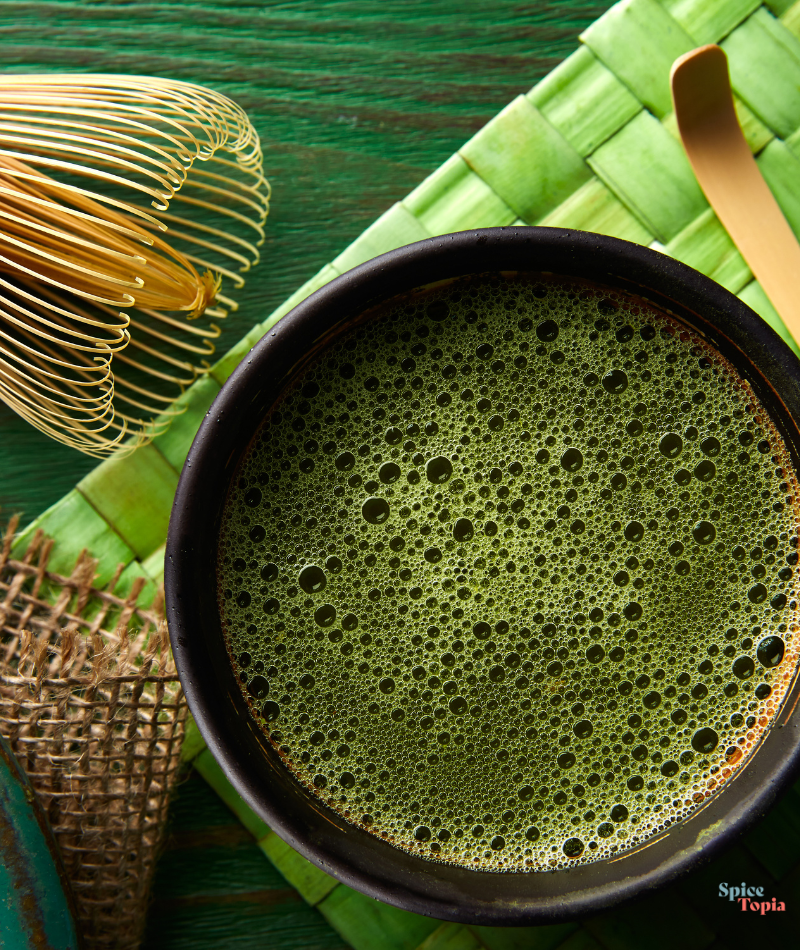
Beyond its delightful taste and versatile nature, matcha offers a wealth of health benefits. Packed with antioxidants, particularly catechins, matcha helps protect your body from harmful free radicals. These antioxidants have been linked to reduced inflammation, improved heart health, and even potential cancer prevention.
The L-theanine in matcha promotes relaxation and focus, making it a popular choice for those seeking a calm and alert state of mind. Additionally, matcha contains vitamins, minerals, and fiber, contributing to overall well-being.
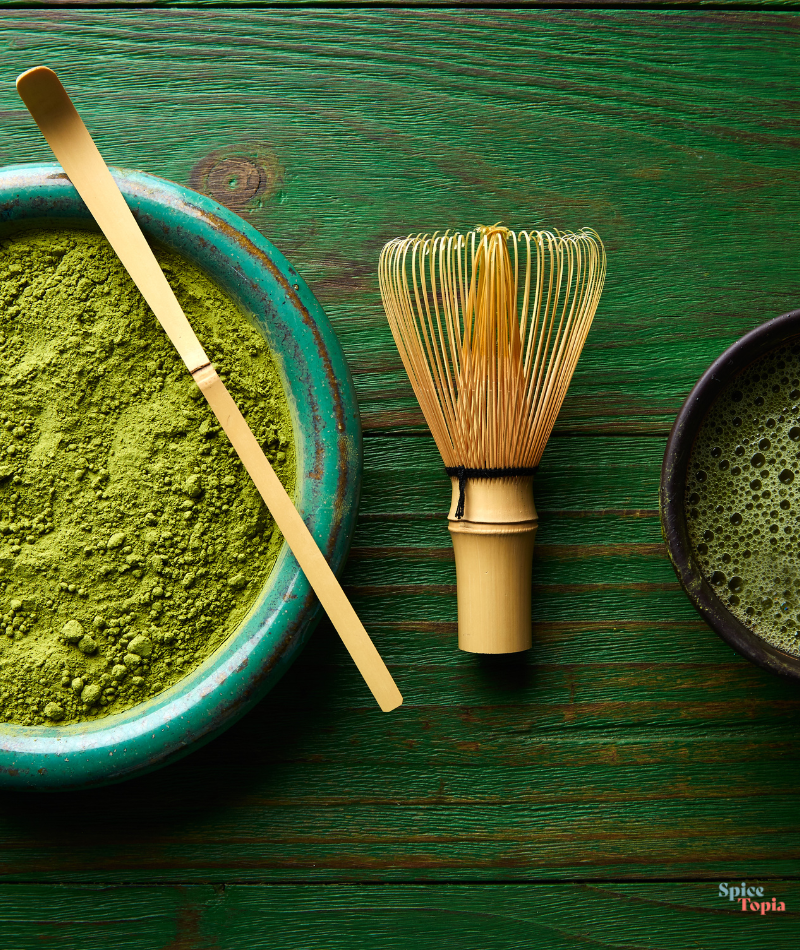
So, the next time you encounter this vibrant green powder, remember its rich history, the ingenious cultivation method, the meticulous processing that transforms tea leaves into the versatile and delicious matcha we know today, and the impressive array of health benefits it offers.
Ready to further explore the world of matcha?
Check out our luscious desserts made with matcha:
Find Matcha and Over 100 More Teas At SpiceTopia



